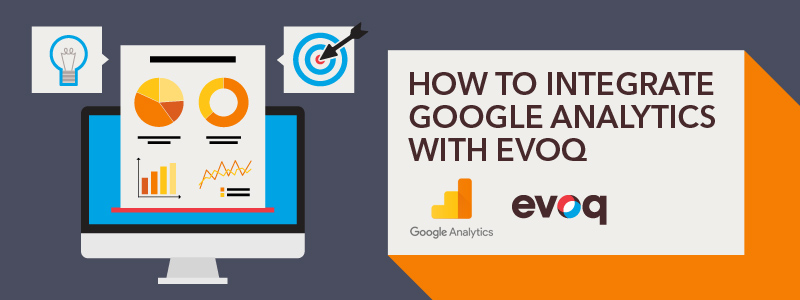
In Evoq 9.0 and higher, our Analytics feature provides detailed page metrics and visualizations "in context" with the page you’re visiting. This feature uses data from a customer’s Google Analytics instance and is available in particular versions of Evoq products.
Before you can make use of this feature, you must first authorize the Evoq Analytics service to access your Google Analytics account. If you access this feature before authorizing Google Analytics, then no data will appear.
Even if you previously used the Google Analytics connector in Evoq, you will need to perform the authorization step again in Evoq 9.
Integrating Google Analytics with Evoq Analytics
Go to Persona Bar, then Settings, then Connectors. Under "Configure Connections," choose "Google Analytics" and click "Connect." If you already performed this first step, then click "Edit."

Image: Finding Google Analytics in our list of built-in connectors.
Click on the Lock icon to begin the Authorization process.

You'll now see the Google Account login screen. Use the credentials associated with your Google Analytics account and authenticate. This will open the Authorization window.

The application will request "Offline" access. Granting this access means that the Evoq Analytics service will be able to read data from your Google Analytics account, even when you're not logged in. Click "Allow" to continue.
Integration Settings
Once Google Analytics accepts the Authorization, the Integration Settings menu will appear. This is used to select the Google Analytics account that will be associated with your Evoq site.

Under each Google Analytics Account are multiple Web Properties, and each Web Property has multiple Profiles.
It is important to choose the correct Account/Web Property/Profile combination.
If you don't, then the data in Evoq will not match the site you are expecting to see.
Typically, you’ll use the "All Web Site Data" profile unless you configured a specific profile to filter out certain types of traffic, or for a certain set of rules.
Once all three selections have been made, click "Select Web Property" to finalize your selection.
You'll now be returned to the Google Analytics Connector screen. The "UA" Web Property Identifier is automatically selected for you.
Additional Settings
You can add a value for "Domain Name" if you want to support cross-domain tracking. This prevents analytics from counting referrals from a particular domain as external referrals.
Check the "Track for Administrators" if you want to include web traffic from anyone logged in with an Administrator or Super User account.
Click "Save" to finish and exit from the Persona Bar. This process needs to be repeated for each Evoq site for which you have an associated Google Analytics account.
Unlinking your Google Analytics Account
If you no longer want to link your Google Analytics account – for example, if you connected the wrong account, or now use a different Google Analytics account – you can do so from the Google Analytics Connector.
Just go back to the Google Analytics Connector and click on the ‘unlock’ icon.

Image: Unlinking your Google Analytics account.
Once clicked, it will ask you to confirm that you want to unlink Google Analytics from your site. Click "Delete" to confirm. The system will remove the authorization between the Evoq Analytics service and Google Analytics, and you will not be able to use the Analytics reports in Evoq until the connection is re-established.
Summary: Evoq Analytics and Our Google Analytics Connector
Our Google Analytics connector provides a quick and easy way to integrate Google Analytics with Evoq. This brings tight integration between your Evoq installation and Google Analytics, which greatly assists you in leveraging Evoq Analytics for success with your sites.
Interested in learning more about the Evoq CMS? Fill out a form and we'll schedule a custom demo that's suited to your interests and requirements.
Note: This post was originally published on December 21, 2016, and was updated with new information on January 17, 2017.